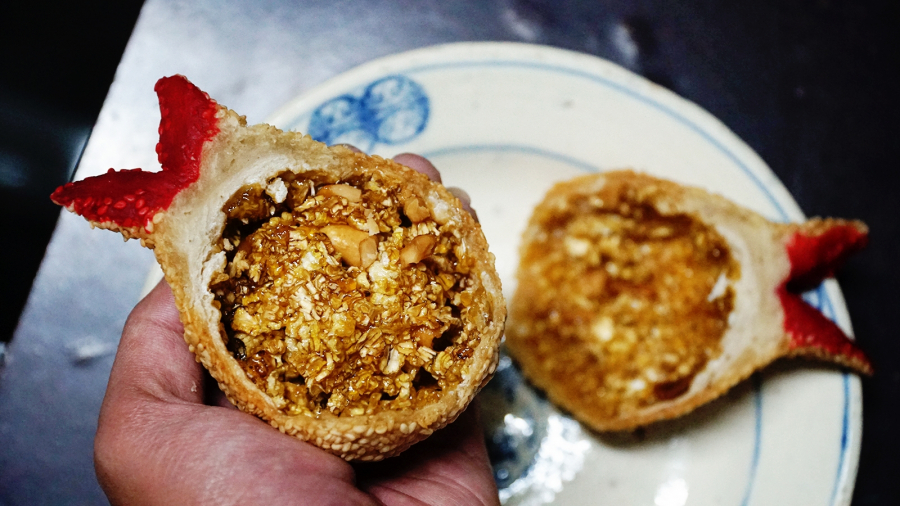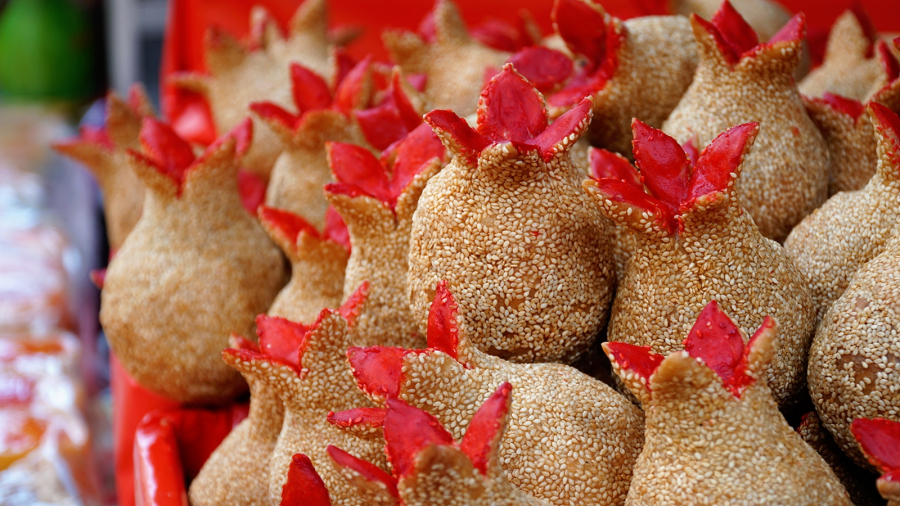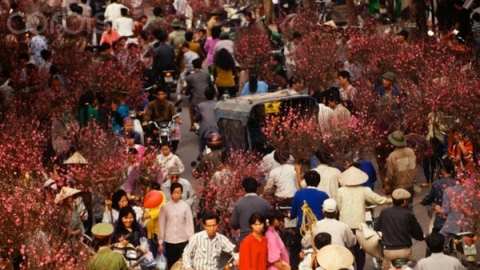Coming to Cho Lon (District 5, Ho Chi Minh City), especially Phung Hung market, on the days before Tet, you will easily come across the image of temporary stalls, displaying all kinds of different cakes. There are families who have been attached to this place for decades and only open for sale on the occasion of the traditional Tet.

Among the many traditional cakes favored by Cho Lon residents during spring, pomegranate cake stands out with its unique shape and eye-catching red color. The name of this cake also comes from its pomegranate-like shape. Elderly people in Cho Lon area said that pomegranate cake is often offered to the Kitchen God or on New Year's Eve. Many people also buy the cake to display in their homes until the end of Tet. According to ancient beliefs, the cake will bring good things to the whole family, especially love.

Mr. Luong Van Long (born in 1965) has more than 30 years of experience making pomegranate cakes in District 5. "Like some other households, my family sets up a pomegranate cake stall every year on Nguyen Trai Street," said Mr. Long.
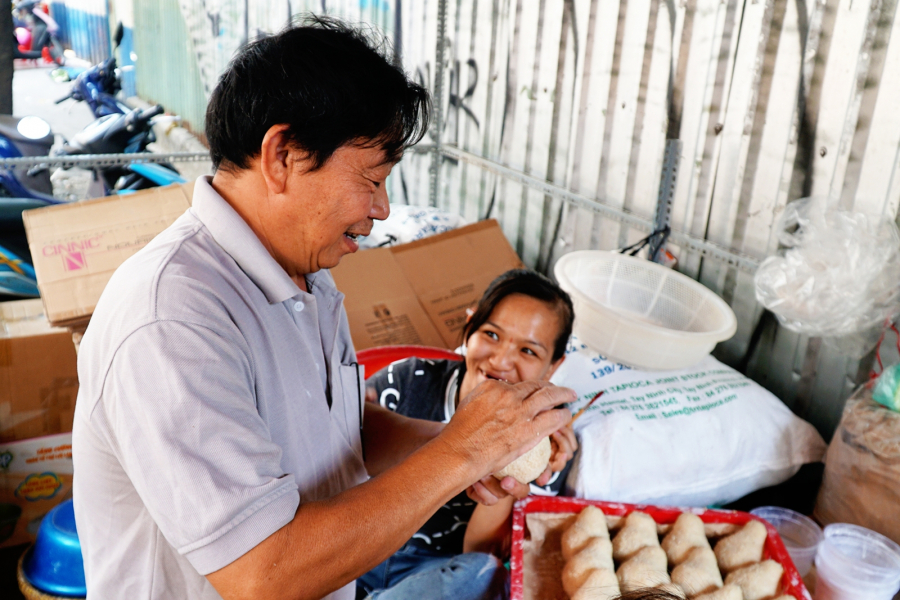
Completing a cake requires a lot of effort. "Cooking sugar, mixing green rice, pressing into molds, attaching the crust, attaching cotton, covering with sesame seeds, painting... are some of the basic steps. There are nearly 10 steps to be done before the cake reaches the customer," said Mr. Long.

The main ingredient to make the cake is rice flour. Many places add a little wheat flour and malt. The filling is a mixture of roasted split peanuts, lotus seeds, green rice made from glutinous rice and malt. The filling is placed in a thin piece of dough, about the size of a hand. The maker must shape the cake into an oval, round shape. In the photo, Mr. Long uses scissors to shape the petals on top of the cake.
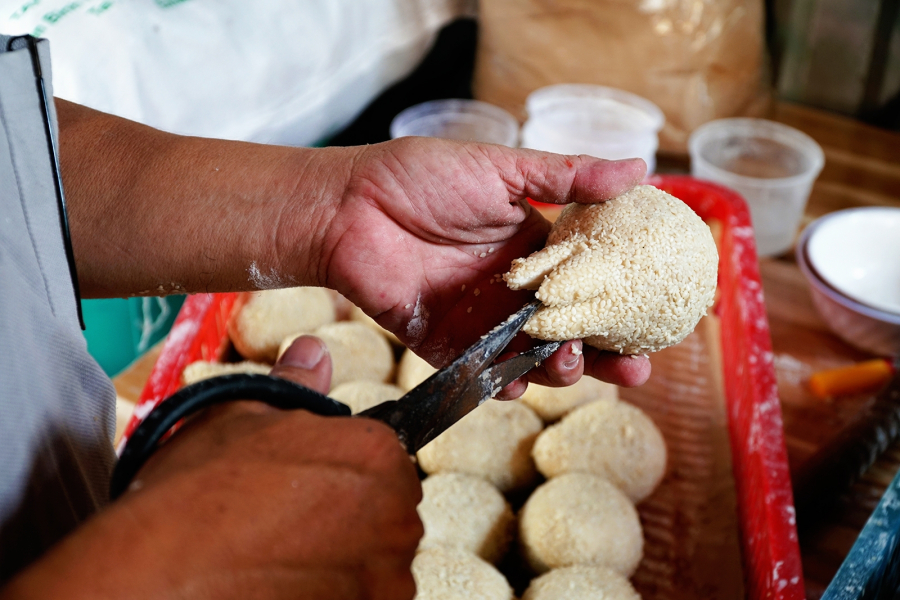
Ms. Nguyen Thi Hai (born in 1964) lives in District 8 and is working at Mr. Long's family's cake stall. This is the first year Ms. Hai has worked here. "Thanks to this job, I have learned about a unique cultural aspect of Chinese New Year celebrations," she shared.
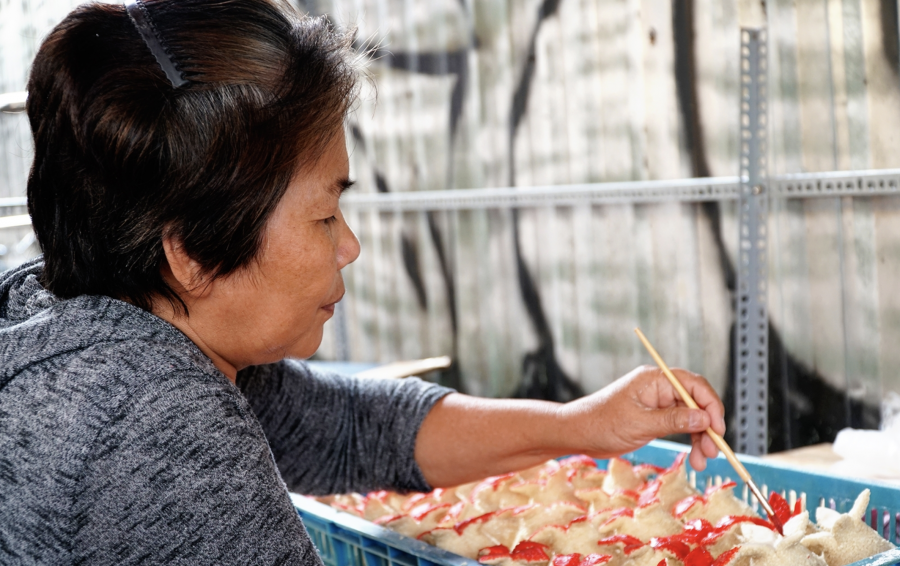
The cakes, after being basically finished, will be handed over to Mrs. Hai. She is in charge of painting the petals with food coloring. The cakes after being painted have a bright color and a fragrant sesame smell.
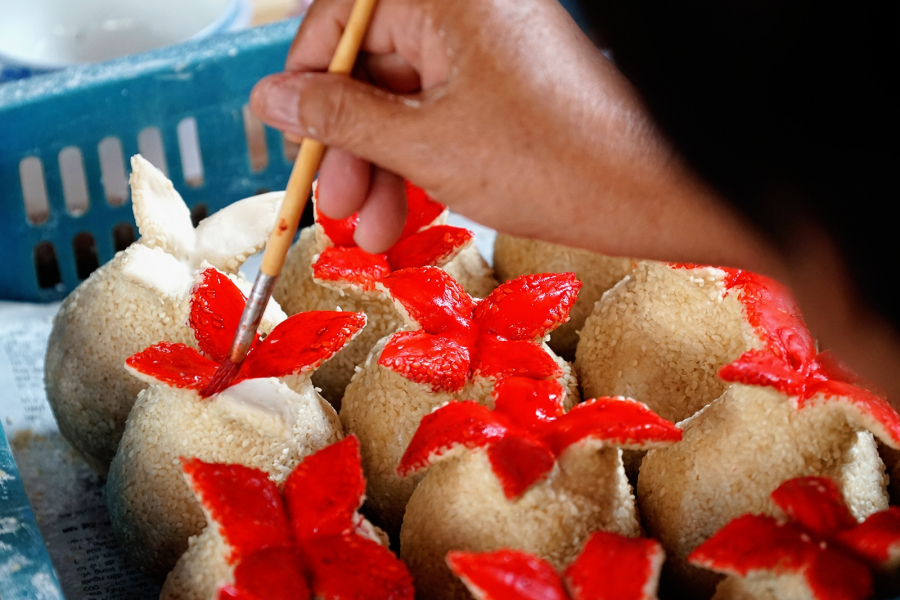
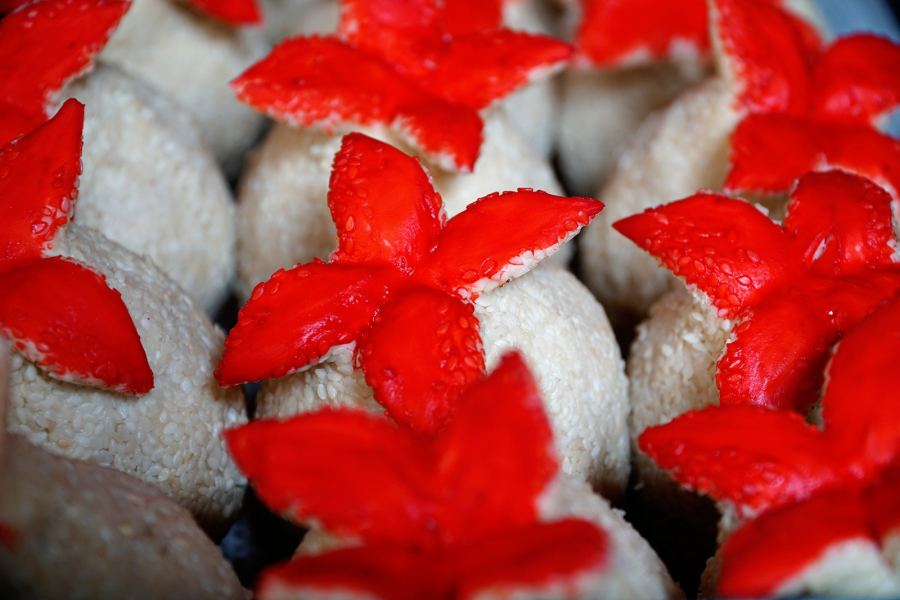
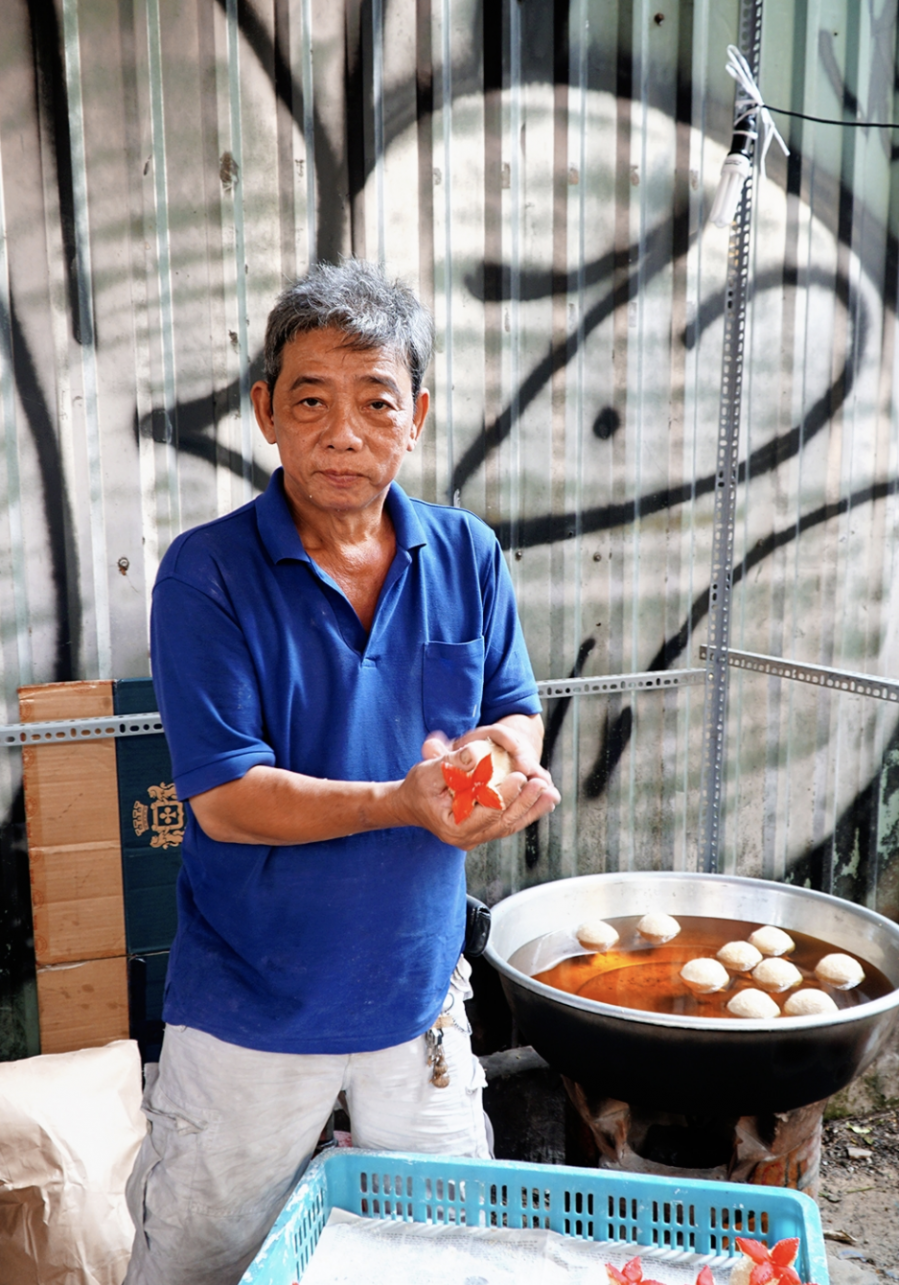
Before frying, another person shapes the cake into a round shape and checks the firmness of the crust and petals.
When frying in a pan of oil, the cake is placed upside down (petals facing down). "This frying method cooks the petals first, ensuring they are firm before being turned upside down," Mr. Long added.
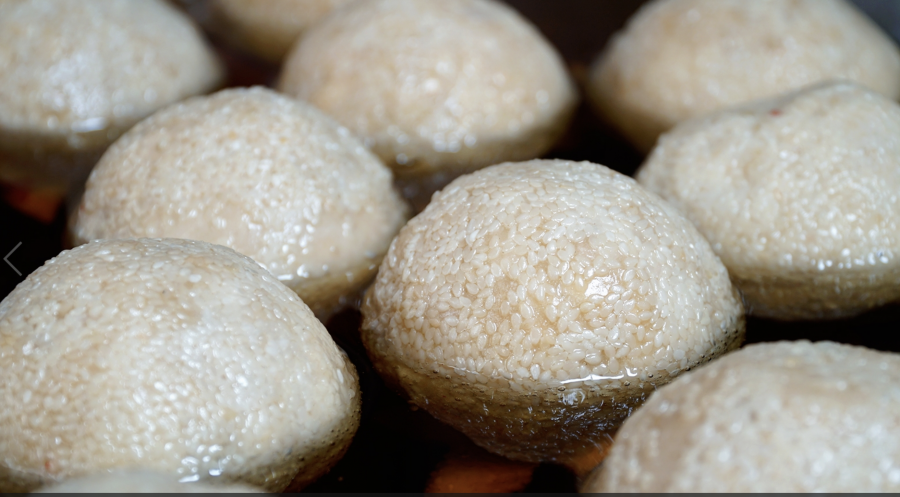
After frying, the cakes are placed in a separate basket to drain the oil. The outer layer is covered with a layer of sesame seeds, and after frying, it has an attractive golden color.
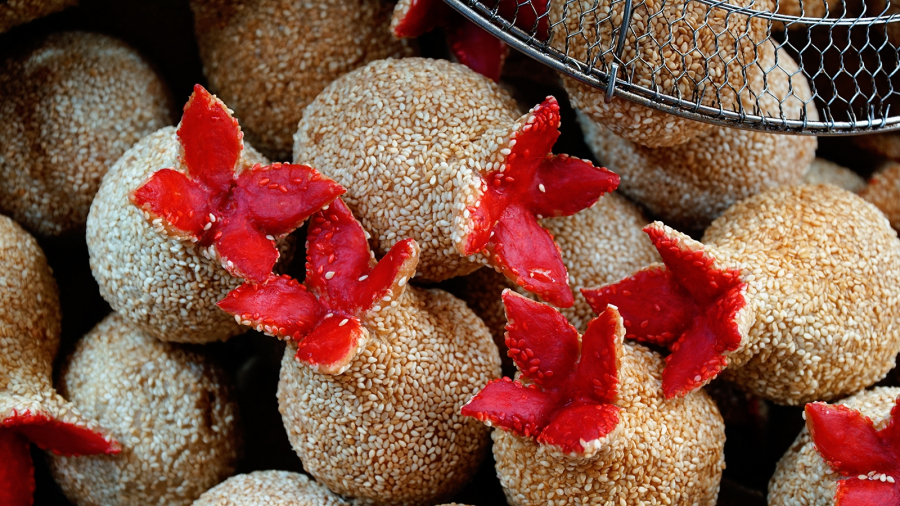
Pomegranate cake is sweet and a little fatty. Peanuts, green rice and malt are kept inside, so it is very fragrant. For Chinese people, pomegranate cake is a common fruit, often sold on the street but is indispensable in the New Year's offering tray. On normal days, many people also make the cake themselves to pray for children. Each kilogram of cake costs from 200,000 VND. The cake has many different sizes for customers to choose from.
